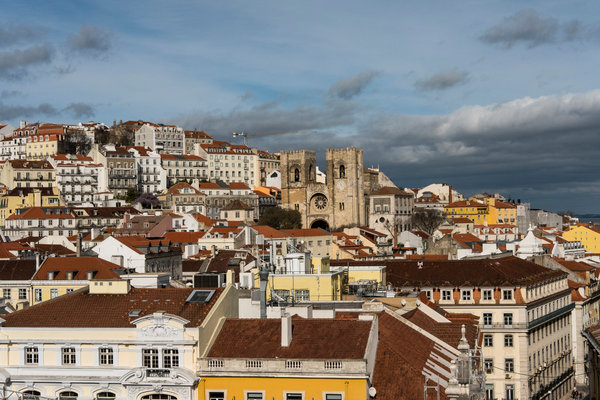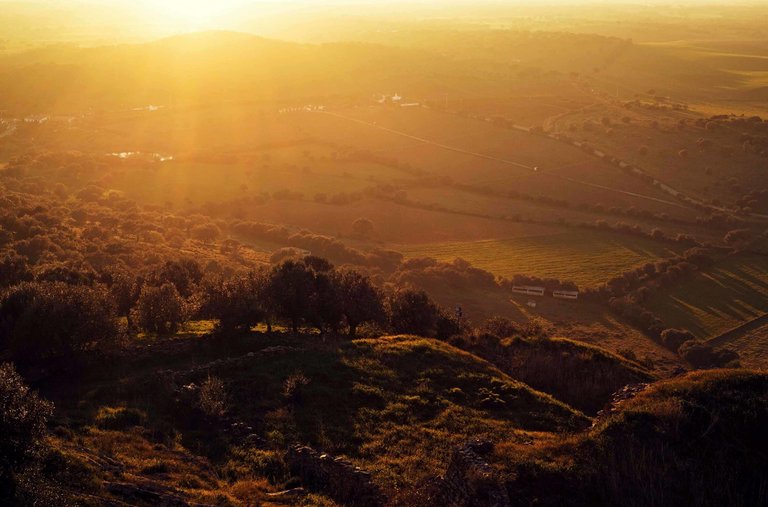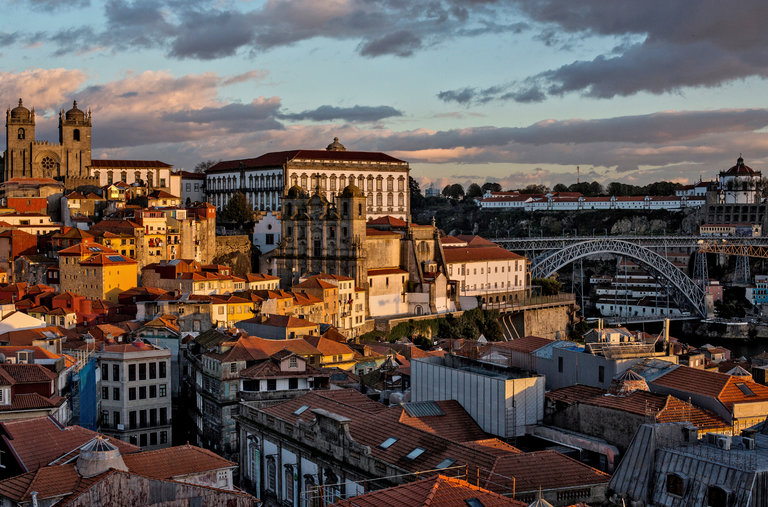Lisbon may be one of Europe’s more affordable capitals, but if you’re in search of a spectacular meal, it’s not difficult to drop 120 euros (about $135) for a three-course dinner (without wine) at restaurants like the Michelin-starred Belcanto.
Fortunately, budget travelers can turn to tascas: small, unpretentious restaurants that, back in the early part of the 20th century, catered mostly to the working class, and sold wine and petiscos, or shared plates, along with what was once their main product: coal.
These days, Lisbon’s tascas — including those that have recently opened or been taken over by new owners — still serve traditional, filling dishes, with meat- and seafood-based stews figuring predominantly.
“The word tasca,” said Tiago Cruz, the author of “Guia das Tascas de Lisboa,” a guide to about 25 of Lisbon’s most traditional restaurants, “is a compliment, more like a guaranteed, trusted value, with well-cooked, comfort Portuguese food, and honest prices.” While newer versions of tascas “bring a touch of refinement,” he said, “the Portuguese traditional tasca cuisine continues to be there.”
Twenty euros or under will buy you a three-course meal with wine at most of these restaurants, and you can expect to find dishes like pataniscas de bacalhau (salt cod fritters) and cozido à portuguesa (meat-and-sausage stew) on the menu, along with a variety of petiscos: clams à Bulhão Pato (clams with a sauce of olive oil, garlic and cilantro), say, or moelas estufadas (chicken gizzard stew).
If you’re looking for a taste of local Lisbon, here are four spots — all part of a new wave of tascas — worth checking out.
Petisco Saloio
Walk downstairs to this small, tiled, basement-level restaurant in the residential neighborhood of Campo Pequeno, and you’ll find one of Lisbon’s great dining bargains.
The two new owners and cooks, Carlos Pinheiro and Diogo Meneses, weren’t even born when this tasca first opened 30 years ago with the name O Buraquinho, which means tiny hole (and indeed, the dining room seats only about 20 people). Their goal is to attract a mainly neighborhood clientele with dishes that the former tasca specialized in: filetes de peixe-galo (John Dory fillets), feijoada (bean stew) and arroz de gambas (rice and shrimp), while keeping the TV on a news channel.
For 8.5 euros, you’ll get a full lunch, with bread and olives, a main course, dessert and espresso. On a recent visit, I settled on a wooden stool next to two locals who were already devouring pots of feijoada with a bottle of homemade piri piri, a Portuguese sauce made with crushed chiles, lemons and red bell peppers. I hesitated between petingas fritas com arroz de tomate (fried whitebait with tomato rice) and entrecosto assado (slow-cooked spareribs), and settled on the latter, which was tender and moist, served with homemade fries and a tomato and lettuce salad. Dessert was a sweet, dense slice of syrupy torta de laranja (orange roll cake).



Pleased, I returned for dinner and sampled choco frito (fried cuttlefish) with paprika mayonnaise; bochechas de porco (braised pork cheeks); and, for dessert, a tasca mainstay: doce da casa, a mix of egg cream, Maria cookies and condensed milk. The cost was 15 euros, without wine.
Petisco Saloio, Avenida Barbosa Du Bocage 38, Campo Pequeno, Tel. (351) 21-796-2989. Entrees from 5 to 8.5 euros.

CreditAna Brigida for The New York Times
Cacué
Amid the tall office buildings and hotels of Picoas, a few blocks from the Calouste Gulbenkian Museum and the Eduardo VII Park, is the 36-seat Cacué, which has been a hit ever since it opened last fall.
For almost 25 years, this space was called O Tomás, a favorite among locals, not only for the convivial atmosphere, but also for its inexpensive daily specials. When the new owner and chef, José Saudade e Silva, bought it in 2017, he wanted to improve its appearance, so he replaced the dark wooden walls with lighter wood, and added a counter in front of the kitchen. He has barely touched the prices, though, with daily dishes costing between 6 and 12 euros. He also hired Dona Rosa, who cooked at the original tasca, to produce a weekly menu that runs to feijoada, bacalhau à minhota (salt cod with onions and potatoes), and favas com entrecosto (fava beans with spareribs).
A friend and I recently had a marvelous lunch that included pataniscas (cod fritters), pastelinho de língua (veal tongue patty), ovas panadas (fried fish eggs) and turbot fillets, both with tomato rice on the side. For dessert, we had an indulgent chocolate mousse and arroz doce (rice pudding).
There are no reservations for lunch, so get here early or late to beat the crowd, but you should book a table for dinner. Expect to pay 15 euros for lunch, and 20 for dinner, with wine.
Cacué, Rua Tomás Ribeiro 93 B-C, Picoas, Tel. (351) 21-608-2990, restaurantecacue.com.
A Taberna da Rua das Flores
In 2012, the city’s downtown shopping district, Chiado, was only just starting to feel the consequences of Portugal’s financial crisis. In that same year, A Taberna da Rua das Flores opened in a building once used by a pharmacy for storage, and has not only survived the economic crisis, but thrived. Diners here will find an emphasis on innovative versions of classic dishes.
On a recent afternoon, a friend and I sat down at a small table. We started with rye and wheat bread, olives and puntillitas, tender fried baby squid served with chopped red onion and parsley. The servings were copious: frango com tomilho e laranja, a moist half chicken with orange, apples and parsnip in a thyme-scented broth; and iscas com elas, or thin slices of marinated cow liver with boiled potatoes (a dish that has silently disappeared from most tasca menus). We shared a creamy lime mousse, but there was also leite-creme queimado (burned custard) listed on the chalkboard menu. The cost was 15 euros per person, without wine.
For dinner, you can sit in the pleasant narrow dining room, or in the back, near the bar, which was once a laboratory, and order Portuguese-Asian inspired dishes like picadinho de carapau (chopped, marinated mackerel with baby shrimps and krill), fried eel, duck breast with kimchi, and a chocolate mousse with a dash of olive oil for less than 20 euros, without wine. No reservations and cash only.
A Taberna da Rua das Flores, Rua das Flores 103, Chiado, Tel. (351) 21-347-9418.
Taberna Sal Grosso
It may be tough to land one of the 30 seats in the popular Taberna Sal Grosso in the touristy Alfama district, but if you do, prepare yourself for some difficult choices. On a Friday night visit, there were nearly 20 seasonal petiscos listed on the chalkboard menu, each costing between 3.5 and 10 euros. The mellow dining room features a large painting of two beloved Portuguese figures — the singer Amália and the soccer player Eusébio — overlooking the mix of tourists and locals seated at marble-topped tables.
A friend and I started with a bittersweet watercress, orange and onion salad, and a faultless croquete de língua (pan-fried, minced cow’s tongue in bread crumbs). Our mains were bacalhau à Brás (salt cod, scrambled eggs and fried potatoes) and a rich, buttery raia alhada (stingray in garlic sauce). The desserts were exceptional, too, including the cinnamon baked apple with pennyroyal ice cream, and dark-beer pudding. Include house wine or one of the restaurant’s homemade brews, as we did, and you can get away for less than 18 euros a person. Reservations are crucial, and can be made only by email (tabernasalgrosso@gmail.com) or Facebook (facebook.com/tabernaSalGrosso/), or come after 9.30 p.m., when the restaurant is not as busy.
Taberna Sal Grosso, Calçada do Forte 22, Santa Apolónia, tabernasalgrosso@gmail.com.

52 Places to Go in 2019
A starter kit for escaping into the world.




